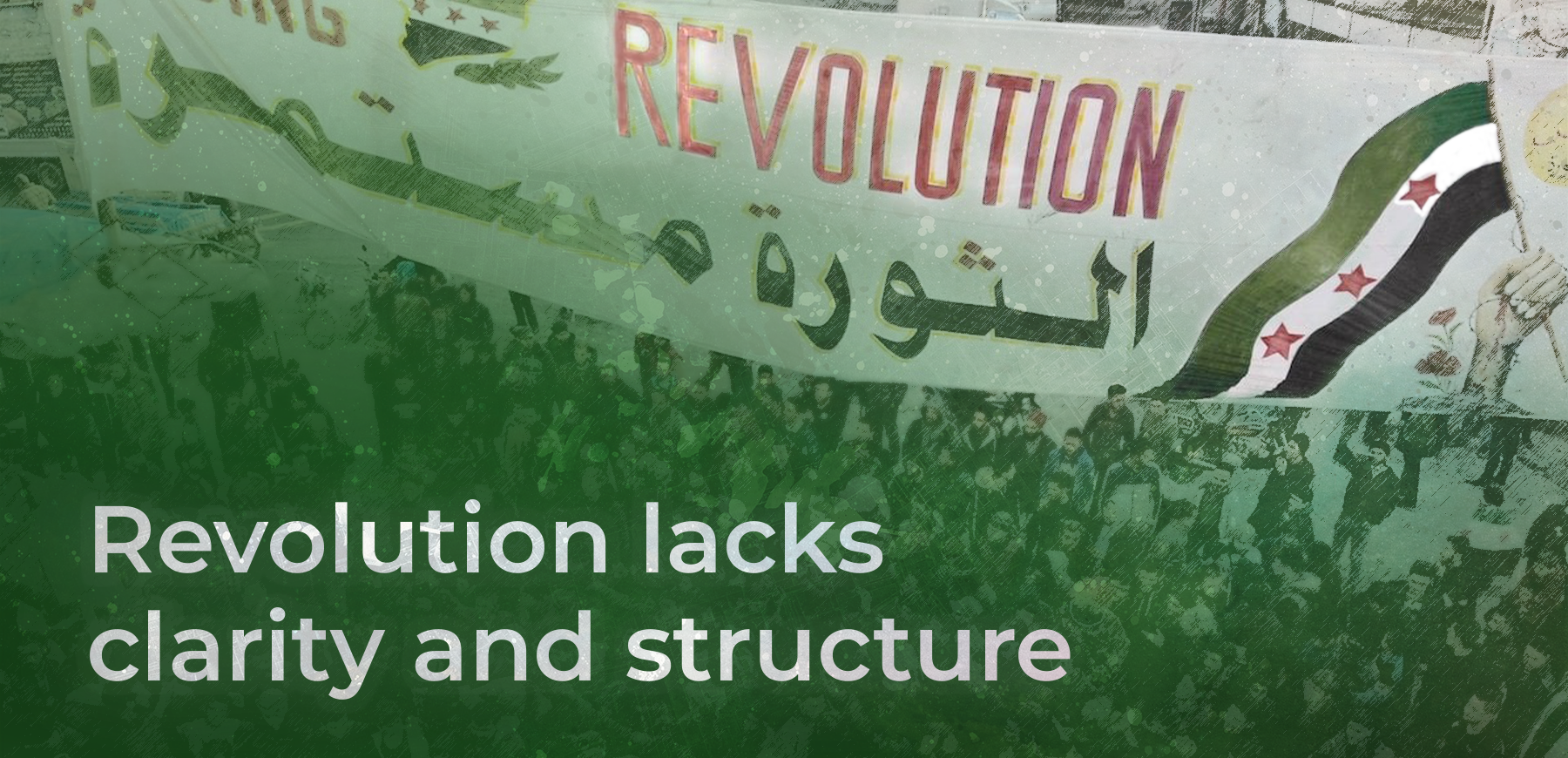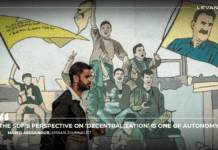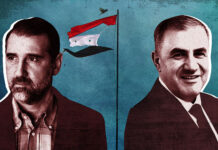
By: Muhammad Khalid
Translation: L24
Structural Crises of the Syrian Revolution was originally published by Al-Khatabi for the Study of Revolutionary Wars and was translated from Arabic to English and edited by L24. The Arabic essay by Muhammad Khalid examines the root causes and cures of the inherent systemic issues of colonialism, insecurity, and fragmentation plaguing Syrian society and culture and hence the revolution and various revolutionary projects and institutions.
______________________________
The crisis we are experiencing, (regarding the Syrian Revolution) is worsening day by day in the events taking place in the region, which places us amid a scene of ever-increasing complexity requiring careful and multi-dimensional analysis. This crisis is not just a series of successive political events, but rather the result of structural accumulations intertwined with current political developments.
It can be divided into several main dimensions starting from conceptual, through sociological, all the way to the artistic, so that these dimensions are integrated in formulating the current reality with all of its complexities. Examining and analyzing each individually helps dismantle the complexity and ambiguity that usually characterizes an exploration of the strategic environment.
The Conceptual Dimension: Misunderstanding Concepts and Identity Disorder
Syrian society suffers from a deep identity crisis and confusion over inherited concepts such as the concept of state and government, party and organization, and security, which creates major challenges for governments, institutions, and civil society actors.
These ambiguities were not the result of the moment, but rather the product of cultural and behavioral accumulations that took root during the Baath era, when these concepts were subjected to systematic changes over four decades. The concept of government and party was no longer sound in the minds of society, and security was no longer limited to protecting society and the people.

The Sociological Dimension: Hostility and the Burdens of History
Today, Syrian society is experiencing a profound crisis of trust that extends beyond the relationships between individuals and institutions to all aspects of society. This crisis is fueled by the feelings of fear experienced by individuals and the threats resulting from the long war, which in turn lead to violent behavior.
This excessive violence has ancient theoretical and philosophical explanations, such as Thomas Hobbes’ theory, which indicates that the collapse of the political system leads to bellum omnium contra omnes a state of “war of all against all.” Excessive violence is a phenomenon that is repeated in the history of internal conflicts and revolutions, and social polarization plays a pivotal role. In deepening this crisis, social divisions create what Carl Schmitt calls “absolute hostility.”

These divisions weaken social ties and increase the crisis of trust. This environment also increases the power and influence of people with violent tendencies, while methods are marginalized. Peaceful means of conflict resolution and problem-solving are ignored in lieu of resolving such issues with violence. Over time, these traits become an integral part of the revolutionary personality and revolutionary society, which makes reaching internal understandings between the revolutionary forces very difficult.
In the midst of this reality, individuals become lost in a sea of conflicting affiliations and are unable to define their identity or their role in society. This loss is not new to Syrian society but rather is an extension of a long history of social and political polarization in Syria. Where Arab-national affiliations clashed with narrow sectarian, regional, and tribal loyalties throughout Syria’s contemporary history, adding a burden to the present, and complicating the possibility of emerging from the current crises, (of conflict and hostility), in the future.
The Technical Dimension: The Absence of a Social Contract
The absence of a clear social contract or an agreed-upon document defining the Syrian revolution and presenting its vision for change represents one of the most prominent challenges facing it today. The constitution, or social contract, is what regulates the relationship between the parties of society and its individuals, defines their responsibilities and rights, and regulates interactions between people and authority.
When this contract is absent – or it is ignored – the arena becomes open to internal conflicts without controls to limit them. Violent and undisciplined resistance to emerging projects appears, and this resistance sometimes reaches the point of dropping those projects and distorting their reputation, even if that harms the revolution itself and the residents of the liberated areas. This phenomenon is observed time and again in the Syrian revolution. Whether at the level of individuals, competing with each other, or at the level of various projects and groups.

Emerging projects in this context face great challenges that push them towards adopting excessive central policies to protect themselves from continuous attacks, but this excessive centralization later leads to obstructing balanced development and increasing the gap between the center and the peripheries. This further widens the gap between these projects and society, and in light of this gap and the crisis of confidence, the goals of the revolution are forgotten, and the discussion about its principles and goals becomes a controversial topic.
There is no doubt that this state of dispersion and loss opens the door to external interference, and increases the complexity of the scene. Addressing this situation requires rebuilding the social contract as a first step towards achieving internal stability and confronting external interference.
Dependent Problems: External Interference and Political Conflict
The external interference and political conflicts that occupy the center of attention among many revolutionary elites and intellectuals in the Syrian revolution are nothing but problems subordinate to deeper and larger structural crises. These crises, mentioned above, are deep-seated and prepare the ground for, and exacerbate, external interventions and political conflicts. These existing issues make countering and dealing with these interventions and conflicts difficult – in isolation from these structural crises.
Revolutionary elites must thus direct their efforts towards addressing these structural crises and rearranging revolutionary priorities by understanding and addressing these deeply imbibed flaws inculcated within society and revolutionary culture. Effective programs can be developed that target the roots of the problems instead of just dealing with apparent symptoms, such as external interventions and political conflicts. The ceaseless, frivolous preoccupation with daily events and symptomatic conflicts, without paying attention to the root causes, will only lead to the continuation, complexity, and fueling of crises afflicting the Syrian revolution instead of rehabilitating and rejuvenating it.








